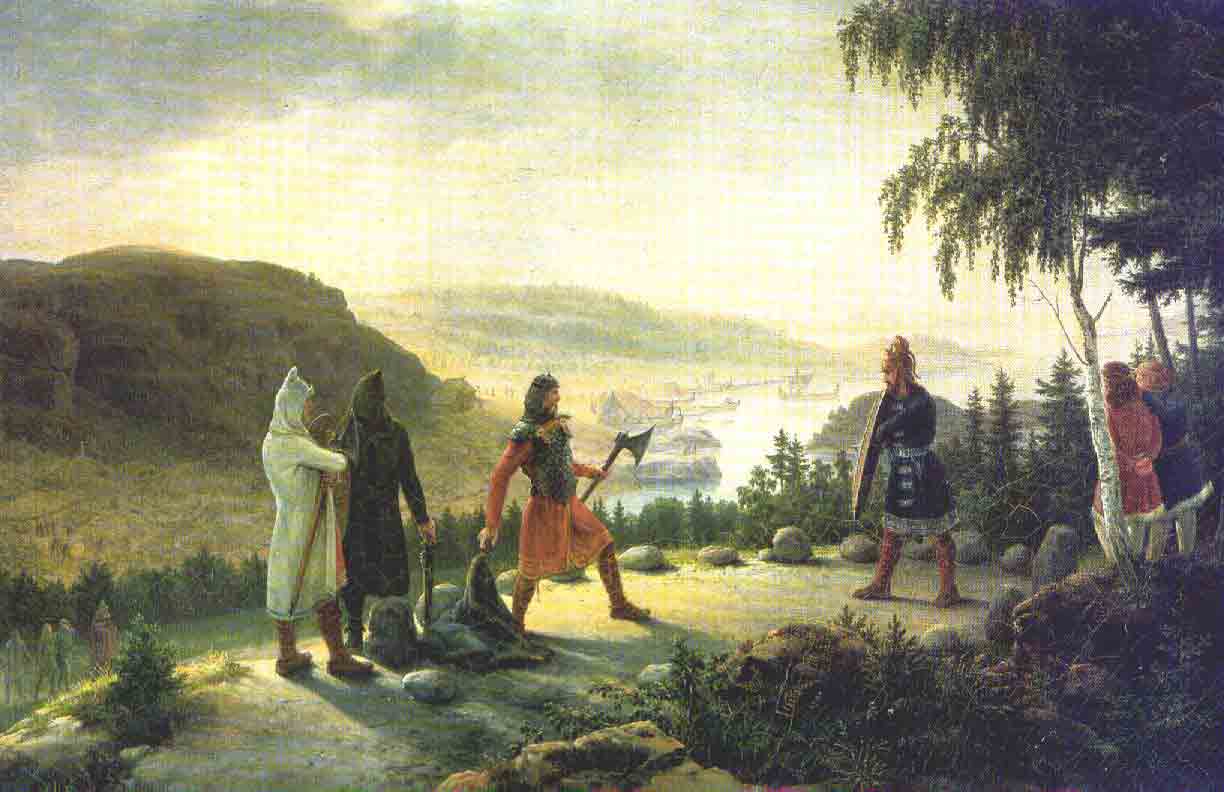Holmgang
The Holmgang is a Scandinavian tradition. It a set duel where the challenger & the challenged meet in a specific plot (usually an islet) to fight and settle their differences.
History
The Holmgang has been pert of the Nordic way for centuries now. It presumably started out as part of the Thing, where laws were laid down or sorted. It came about to sort out disputes between two individuals with the use of violence in a controlled setting.
Execution
The individuals that are involved are usually accompanied or overseen by a higher ranking individual, and sometimes more. A place is chosen, usually an island or isle, but sometimes be a set of standing stones is chosen if some are nearby. A regular way too, is the skin of an animal measuring 3' by 3' is pegged down in a designated spot to act as the de-facto ring.
Since it is mainly to do with someone being offended, the offended person has to show up. The offender also is expected to show as well. If either party doesn't the person is classed as Nīþ, or as loosing honour, and can be cast out as a Nidingr (outlaw). The Holmgang has to take place 3 to 7 days after it is declared. It does not matter about social standing and can come around about any of the following: a matter of honour, ownership or property, demand for restitution or debt, legal disagreement, intention to help a wife or relative, or avenge a friend. Sometimes a warrior on friendly terms can take the place of an outclassed friend.
The rules & place is always specified beforehand, and the challenger always recites these at the start of the challenge. These included what the weapons are to be, who was eligible to strike first, what considered a defeat or forfeiture, and what the winner received. They are permitted a number of shield to use (usually three). It used to end in death of one, though not so common now, and usually ended with first blood. Any deaths are not considered murder though, and if it happened then the case was settled. Usually the challenger got the chance to strike first, and took turns until blood is drawn. Stepping outside a designated boundary is prohibited, and those that do forfeit automatically. Rarely, professional robbers would use & abuse the system to get what they want from others, and a few eddas speak of berserkers making a living at it.
Components and tools
A single handed weapon, a shield (up to 3 are common but could be less or more), and sometimes markings around the site. These usually comprise of wooden staves.
Participants
Usually a challenger, and the challenged take part. The challenger is expected to fight and demand restitution in some form if proven right. The challenged is there to show face and avoid being dishonoured. Normally, a person of some high rank, or a deputy of them would be present to oversee that the duel is arbitrated correctly, and make a note of who won & what the loser has to do afterwards, if anything. Once in a while, warrior can step in to act on behalf of someone who is out classed.
Observance
The Scandinavians carry out this, usually after a Thing is held, and people put their case across. It normally comes into effect where there is no clear cut case for the local people or noble to rule on.
Primary Related Location
Important Locations
Related Organizations
Related Ethnicities



Comments